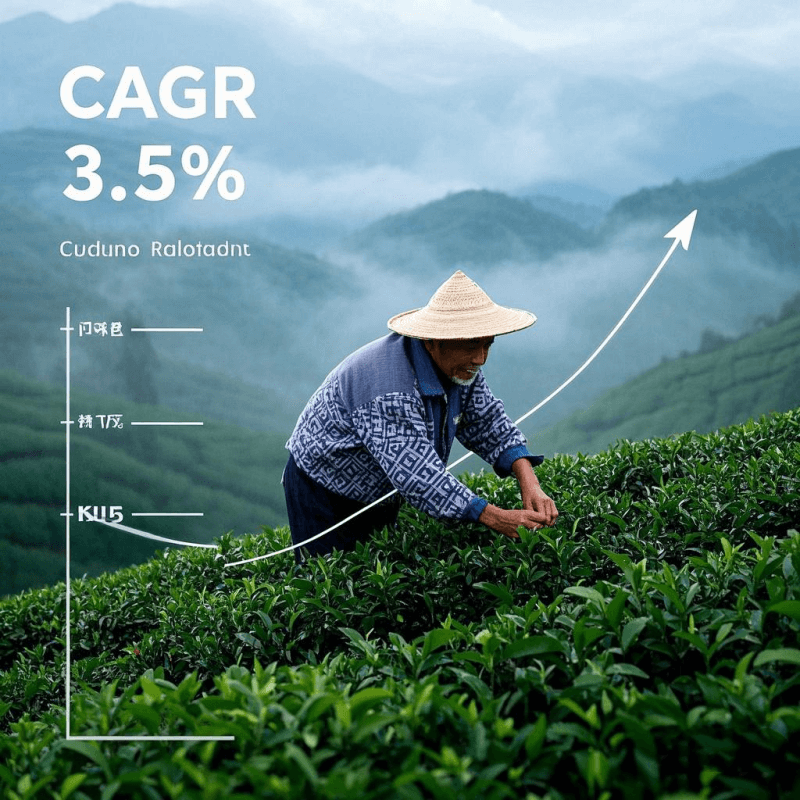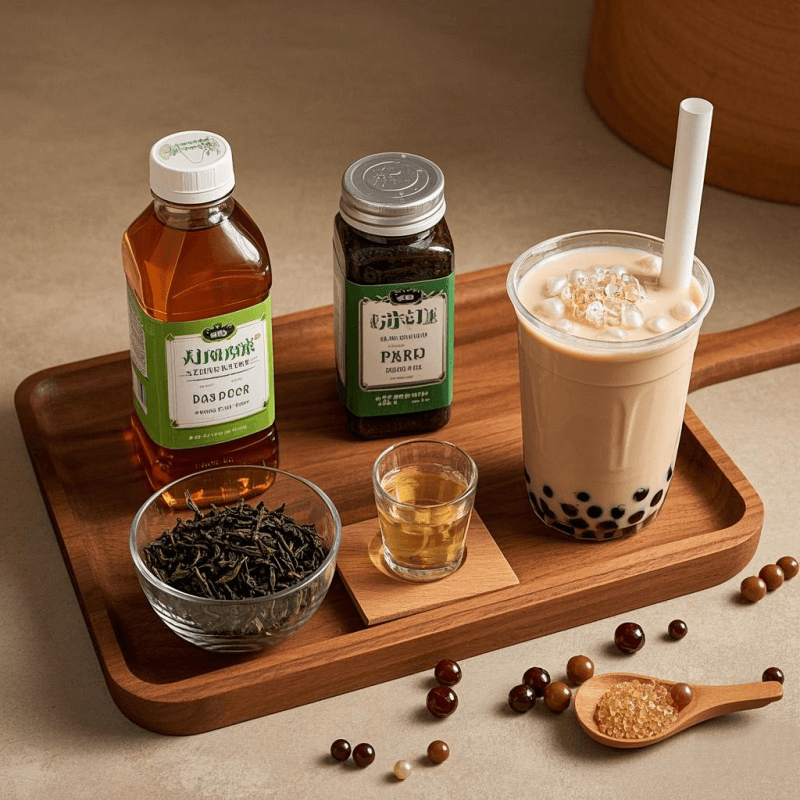Global Trends & Market Insights of Oolong Tea
Introduction: Why Oolong Tea is Gaining Global Popularity

Oolong tea, with its distinctive semi-fermented processing method that bridges the gap between green and black teas, is experiencing unprecedented global recognition. This traditional Chinese tea variety offers a complex flavor profile ranging from floral and fruity to toasted and mineral, creating a sophisticated drinking experience that appeals to discerning consumers worldwide. Beyond its nuanced taste, oolong tea delivers significant health benefits, including high antioxidant content, metabolism-boosting properties, and natural weight management support.
The growing international demand for oolong tea reflects a broader consumer shift toward natural and functional beverages. As health-conscious consumers increasingly seek alternatives to artificial drinks and sugary beverages, oolong tea’s positioning as a premium, wellness-focused option has resonated strongly across diverse markets. This trend aligns perfectly with the global movement toward mindful consumption and authentic, artisanal products.
Global Market Growth of Oolong Tea
The global oolong tea market demonstrates robust expansion, with current valuations indicating steady upward momentum. Market research projects a compound annual growth rate (CAGR) of approximately 3.5% from 2025 to 2032, driven by increasing consumer awareness of health benefits and expanding distribution channels. This growth trajectory reflects the tea’s successful transition from a regional specialty to an internationally recognized premium beverage category.
Particularly noteworthy is the explosive growth in the oolong bubble tea segment, which exhibits a remarkable CAGR of around 7%. This growth is primarily fueled by younger demographics who embrace both traditional tea culture and innovative consumption formats. The bubble tea phenomenon has introduced oolong to new consumer segments, creating gateway experiences that often lead to broader oolong tea appreciation.
Key importing regions include the United States, Canada, European Union countries, and Southeast Asian markets. These regions show consistent demand growth, with established tea cultures in countries like the UK and Germany driving premium oolong adoption, while emerging markets demonstrate increasing sophistication in their tea preferences.
Health Benefits Driving International Demand
Oolong tea’s health benefits serve as primary demand drivers in international markets. The tea’s rich polyphenol content, particularly EGCG (epigallocatechin gallate) and theaflavins, provides powerful antioxidant protection against cellular damage and supports overall wellness. Research indicates that regular oolong consumption may enhance metabolic rate by up to 10%, making it an attractive option for health-conscious consumers seeking natural weight management solutions.
The positioning of oolong as a low-calorie, functional alternative to sugary beverages resonates strongly with contemporary dietary trends. Unlike many commercial drinks that rely on artificial additives, oolong delivers natural flavor complexity while supporting hydration and metabolic health. This dual benefit of pleasure and wellness creates compelling value propositions for consumers across age groups.
Premium organic and loose-leaf oolong varieties experience particularly strong demand, reflecting consumer willingness to invest in higher-quality products that deliver superior health benefits and authentic experiences. This trend supports premium pricing strategies for exporters who can demonstrate organic certification and traditional processing methods.
Product Innovation & New Consumption Scenarios

Innovation in oolong tea products has expanded consumption occasions and attracted diverse consumer segments. Ready-to-drink oolong tea bottles address convenience-seeking consumers who want premium tea experiences without brewing requirements. These products maintain oolong’s distinctive flavor characteristics while offering portability for busy lifestyles.
The bubble tea revolution has introduced creative oolong applications, with fusion flavors like taro oolong, pistachio oolong, and melon oolong attracting younger consumers. These innovative combinations respect traditional oolong quality while embracing contemporary flavor preferences, creating bridge products that introduce new consumers to authentic oolong appreciation.
High-end varieties including Tie Guan Yin, Da Hong Pao, and Taiwanese High Mountain Oolong are gaining prominence in specialty tea shops worldwide. These premium offerings command significant price premiums while educating consumers about oolong’s artisanal heritage and terroir influences. Such products appeal to connoisseurs seeking authentic, traceable tea experiences.
Regional Insights
North America demonstrates strong oolong adoption among health-conscious consumers, with bubble tea shop expansion driving initial exposure and subsequent interest in traditional preparations. The region’s established coffee culture provides a receptive audience for premium tea alternatives, while growing wellness awareness supports oolong’s health positioning.
Europe shows particular interest in premium and sustainable oolong products, with consumers prioritizing organic certification and ethical sourcing. The region’s sophisticated tea culture, particularly in countries like Germany and the UK, creates demand for high-quality loose-leaf varieties and authentic brewing experiences.
Asia-Pacific markets outside China present unique opportunities, with Taiwan and Japan developing distinctive oolong export specialties. Taiwanese High Mountain Oolongs and Japanese roasted oolong varieties offer differentiated products that command premium pricing while showcasing regional processing innovations.
E-commerce & Distribution Channels
Digital commerce platforms, particularly Amazon and specialty tea websites, have revolutionized oolong tea distribution, enabling direct consumer access to premium varieties previously available only through specialized retailers. Direct-to-consumer models allow producers to maintain quality control while building brand relationships with overseas customers.
Successful international oolong marketing emphasizes storytelling and authentic branding, helping consumers understand the tea’s cultural heritage and production methods. Educational content about brewing techniques, flavor profiles, and health benefits creates informed consumers who appreciate quality distinctions and justify premium pricing.
Strategic partnerships with local tea shops and distributors provide essential market entry support, combining online reach with physical retail presence. These partnerships enable consumer education through tastings and demonstrations while building local market credibility.
Challenges & Opportunities for Exporters
Quality verification and authenticity certification represent critical challenges for oolong exporters, as consumers increasingly demand transparency about sourcing and processing methods. Organic certifications, fair trade designations, and geographical origin certifications help differentiate authentic products from mass-market alternatives.
Packaging innovations focusing on eco-friendly materials and resealable designs address environmental concerns while maintaining product freshness during international shipping. Sustainable packaging solutions appeal to environmentally conscious consumers while demonstrating brand values alignment.
Cultural promotion through consumer education about traditional brewing methods and oolong heritage creates deeper brand connections and supports premium positioning. Educational initiatives help consumers appreciate quality differences and develop long-term brand loyalty.
Conclusion: Future Outlook
Oolong tea’s global trajectory indicates continued growth as a healthy, versatile, and premium beverage choice. The convergence of health consciousness, premium product appreciation, and cultural curiosity creates favorable conditions for sustained international expansion.
Exporters who successfully highlight authentic origin stories, demonstrate clear health benefits, and offer innovative consumption formats will capture the greatest market opportunities. The future belongs to brands that respect traditional quality while embracing contemporary consumer needs, creating authentic premium experiences that justify oolong tea’s position as a sophisticated global beverage choice.
As international consumers become more educated about tea quality and cultural significance, oolong tea’s unique position between green and black tea categories, combined with its proven health benefits and premium positioning, ensures continued global market growth and consumer adoption.
